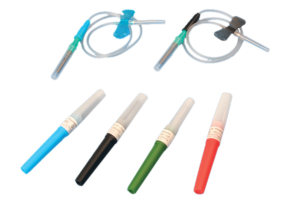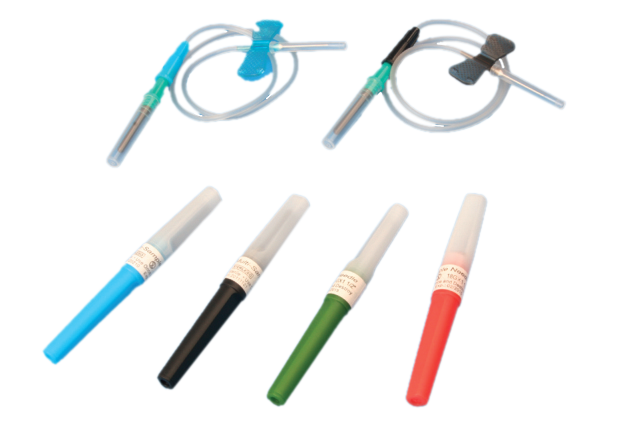Blood Collection Needles to build effectiveness and decrease torment during blood assortment. Drawing blood for research facility investigation is a fundamental errand that might be performed by a few distinct clinicians throughout a given day. Thusly, all staff that perform venipuncture and phlebotomy administrations ought to be taught on the legitimate methods performed with minimal measure of patient distress.
Blood Collection Needles (Multi-Sample)
While the act of venipuncture includes recognizing an optimal vein and effectively gathering blood tests, it likewise includes getting intravenous (IV) access for IV drug treatment or the inspecting of venous blood. Clinical experts should keep guideline conventions for example assortment to guarantee exact demonstrative outcomes, as a mistake during the assortment cycle influences generally downstream examination. Among the choices a gifted phlebotomist should make is deciding if to utilize a straight needle or a butterfly (winged imbuement) blood assortment needle. This choice is convoluted by the idea that albeit straight needles are for the most part viewed as more secure and prevalent for phlebotomy, there are exceptional conditions where this isn't be the situation.
During phlebotomy, blood assortment can be performed utilizing an assortment of needle types and sizes, and assortment gadgets. Butterfly needles frequently accompany adaptable tubing, while straight needles interface with a vacuum holder and a needle. When gathering blood tests, it is fundamental to pick the most ideal assets for the patient, the cycle, and the office.
Blood Collection Needles
The Blood Collection Needles is appended to a cylinder holder or needle before assortment. Assuming the client chooses the cylinder holder, the phlebotomist embeds the needle into the vein and afterward puts an emptied tube onto the posterior of the straight needle to pull out the blood example.
The rear of the cannula is adaptable elastic over the back finish of the cannula that seals the needle when not being used. When the administrator associates the cylinder, it breaks the seal, and the vacuum in the emptied tube consequently pulls out the predefined volume of blood. An adaptable elastic fitting keeps blood from depleting out of the cannula with the evacuation of each cylinder. The plan of the straight needle and assortment framework is ideal when different examples are needed, as many cylinders can be joined to and taken out from a solitary needle. Straight needles are ordinarily accessible in 21 and 22 check.
The for the most part acknowledged advantages of
straight needles incorporate needle stick decreases, quality venous examples, and cost investment funds. In any case, a couple of mitigating factors loan inclination to utilizing the butterfly needle, incorporating when working with little as well as delicate veins.
The Butterfly Needle
The butterfly needle, or a winged-imbuement blood assortment framework, interfaces with slim tubing for smooth access of troublesome veins. The needle is short and straight with plastic wings for the phlebotomist to hold during addition. The tubing appends to a connector and either a needle, vacuum tube holder, assortment bottle, or other tubing. The normal butterfly needles are 1/2 to 3/4 inches long and arrive in a scope of measures, with 21 and 23 check the most often utilized. The littlest measure, 25, is utilized basically with pediatric patients.1 The short needle length permits the phlebotomist to embed it at a shallow point that can build the usability. Generally, there is a security gadget that slides over the needle to lock a large number of its has been utilized to limit the danger of needle stick.
The plan of the winged-implantation blood assortment needle is great for those with little or delicate veins (eg, hands and feet), including neonatal/pediatric, geriatric, oncology, and consume patients. For these cases, the finely exhausted 25-check needle is the favored strategy. Of note, it is ideal to keep away from straight needles with patients who experience uncontrolled developments, like quakes or seizing, because of the expanded danger of nerve damage.2
World Health Organization Recommendations
While surveying whether to utilize the straight needle or the butterfly needle, audit the suggestions of recognized proficient associations, like The World Health Organization (WHO) rules on phlebotomy best practices that help the essential utilization of the straight needle (other than in the conditions referenced above).3 The WHO portrays the straight needle and needle as having an assortment of sizes and measures, being promptly accessible, and useful for an assortment of blood draws (counting pediatric populace), and if heparinized, blood vessel blood assortment. The WHO likewise expresses that butterfly needles are prescribed for hard to get to, little veins in pediatric patients, the older, and other in danger
populations.3

Appropriate Use of the Winged Collection System
Notwithstanding the situations depicted beforehand, butterfly needles are best utilized for blood societies, patients with draining issues, and venous blood gases.2 Furthermore, butterfly needles benefit patients who can't actually change the place of their arms or on the other hand assuming at least ten cylinders are to be gathered at one time.2
These specific uses regardless, ill-advised utilization of butterfly needles can prompt a higher danger of needlestick injury because of the butterfly plan, which might urge the client to deliver control of the needle to free one hand to help the back of the pack while fastening and pulling out the assortment vial on the device.4 Releasing the sharp now breaks OSHA guidelines, and any plan that prompts an absence of control is a deviation from great practice. The butterfly needle additionally can be exorbitant at almost multiple times the cost of a straight needle (cost subject to buying arrangements).5
Straight Needle Benefits
Straight needles are for the most part viewed as the best option for blood test assortment, as they are less inclined to thickening (versus the adaptable tubing utilized in winged-imbuement blood assortment frameworks) and less inclined to hemolysis than assortment through IV catheters. A recent report to assess hazard factors for coagulating in blood tests observed that straight needles are desirable over IV catheters because of diminished danger of hemolysis.6 Also significant, in a recent report, straight needles that withdraw were viewed as the most secure and prompt a 62% decrease in the danger of needlestick injuries.7
Albeit optional to patient and client security, cost isn't to be disregarded while considering the volume of utilization associated with phlebotomy supplies. Consequently, straight needles are generally modest, costing under twenty pennies an example draw. Consequently, medical clinics and labs should screen the utilization of butterfly needles cautiously, as legal assessment of accessible patient veins, accessible needle sizes and types, and assortment pack decision is basic.
End
Picking the right vein, assortment tube, gadget type, and needle size for every individual patient is imperative to legitimate phlebotomy, the nature of which impacts any remaining ensuing cycles. Given the proof, straight needles offer more prominent wellbeing against needle sticks because of helpless method, by and large have less hemolysis and thickening, and can give tremendous expense investment funds. All things considered, butterfly needle sets should be available and utilized for their particular, gainful purposes. Regard for quality in phlebotomy is a help to all research center
administrations.
